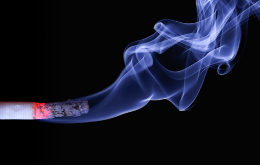
Acute Infection: What Can I do?
1Written by Dr Wolfgang Muller
Written 01/12/2016 – Last major review 01/08/2023 – Last minor review 12/12/2024 – Next mandatory review by Dec 2025
Click on subject in CONTENT to go straight there and click on subject in the TEXT to go back to CONTENT
Content
My child has a viral infection: Is there anything I can do to help?
What does ‘supportive management’ mean?
How can I supplement nutrition to help during an acute infection?
Where can I find the doses and duration of treatment for these supportive measures?
What is the correct humidity for my house?
What medicines are there to help?
Is there anything that really works?
Should I give something for the fever?
Are all cough medicines the same?
Are anti-cough medicines any good?
Are decongestants good during viral infections?
Can I prepare mouth gargles myself?
Why is inhalation the preferred route?
Can I use Traditional Chinese Medicines (TCM)?
What about homeopathy or complementary alternative medicine [CAM] for the common cold?
How much should I spend on health supplements?
How long is the cough going to last?
Recurrent infections: My child is constantly ill. This cannot be normal!
Many parents suffer just as much when they see their baby or small child fall ill with an infection. It is our natural instinct wanting to do something to help and take the misery and discomfort away. Most parents feel they would rather take on the symptoms themselves than seeing their child going through an illness. While we need to assess and treat bacterial infections adequately which involves in most cases antibiotics, it is true, that for a viral infection there is usually nothing comparable to the antibiotics for bacterial infections. However, viral infections are in general milder and there are many supportive treatments on offer that have been available for hundreds of years. An example is the healing power of bee extracts, which have been known by the old Greeks in 350 BC. Some remedies have been passed on from generations to generations. In this series of Frequently Asked Questions (FAQ) I have listed those treatments, which have been shown in large medical trials to be effective to reduce symptoms or shorten the duration of illness. Most importantly, the trials have shown these remedies are safe to use. There are many more remedies which are not listed here and may be known to you or others and you have to use your own judgement whether they are safe and effective.

Most treatments for an acute viral infection are supportive. We should not underestimate the natural power of self-healing. In order to do this well and fast, the body will need rest and warmth. This does not necessarily mean bed rest but equally does not mean going to nursery or school either. Staying at home is a very powerful and sometimes forgotten natural remedy for a viral infection.
The body should have enough fluids, which is best given in frequent and small amounts. Even if children are vomiting, some of the fluid will usually stay down. It is normally not needed to drink more than usual. I recommend seeing a doctor if there are less than three wet nappies or trips to the toilet for a wee in a day. Children can drink what they like, but I recommend avoiding sugary, fizzy drinks. In actual fact, these drinks are best avoided at all times.
In general children lose their appetite during an illness and take very little solids. This is ok as long as they are drinking enough. The advice on drinking is mentioned above. Do not force a child to eat. If they accept a little, it is often good to stick to bland types of foods such as bananas, rice, apples or toast. Avoid giving unhealthy food, just to make them eat something. You might find it is quite hard after that to get children back on a healthy track, especially if they go through a spell of frequent infections.
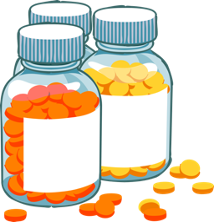
A simple but effective remedy, which our grandparents may have used already, is chicken soup to shorten the symptoms of a common cold. A study published in a highly respected medical journal investigated this claim and found that chicken soup actually helps to reduce inflammation. Inflammation is what makes our airways sore and hurt during the infection. It is an excellent nutritional support during an illness, as it can be drunk from a cup or spoon and it offers many additional benefits such as electrolytes, protein and a little bit of fat.(1)
During an infection extra unprocessed, Manuka or buckwheat honey, zinc and the extract from geranium (pelargonium sidoides) have been shown in large studies to reduce the symptoms of an acute viral infection. The effect of these remedies is not dramatic but nevertheless they help somewhat.(2)
Additional several herbal substances may offer additional benefit such as echinacea, garlic, and turmeric.(3)
- Rennard BO, Ertl RF, Gossman GL, Robbins RA, Rennard SI. Chicken Soup Inhibits Neutrophil Chemotaxis In Vitro. Chest. 2000 Oct;118(4):1150–7.
- Fashner J, Ericson K, Werner S. Treatment of the common cold in children and adults. Am Fam Physician. 2012 Jul 15;86(2):153–9.
- Linde K, Barrett B, Bauer R, Melchart D, Woelkart K. Echinacea for preventing and treating the common cold. In: The Cochrane Collaboration, editor. Cochrane Database of Systematic Reviews [Internet]. Chichester, UK: John Wiley & Sons, Ltd; 2006 [cited 2020 Nov 15]. p. CD000530.pub2. Available from: http://doi.wiley.com/10.1002/14651858.CD000530.pub2
Probiotics contain “good” bacteria, which live in a healthy bowel. There is increasing evidence that a mixture of different “good” bacteria in the gut, skin and respiratory tract is essential for a healthy body(1). I outline other factors, which are important in maintaining, protecting and restoring the balance of “good” and “bad” bacteria in other FAQs. Taking probiotics are one of them and have been shown to be helpful.(2) A benefit has also been demonstrated in large medical reviews during the treatment with antibiotics.(3) In my opinion extension after the treatment of antibiotics would make sense as antibiotics are likely to reduce the survival of “good” bacteria when taken at the same time. There are no clear recommendations what products are best, how much to take and when. The evidence from a very careful review of all the existing world literature until 2020 on this topic suggests probiotics reduce the risk or severity of antibiotic associated diarrhoea in children.(4,5) However, if your child is immune-compromised, has a central line (plastic tube into one of the large central veins of the body) or a gut condition, which increases the risk of bacteria getting into the blood stream, you should be careful and discuss with your specialist.
- Sirisinha S. The potential impact of gut microbiota on your health:Current status and future challenges. Asian Pac J Allergy Immunol. 2016 Dec;34(4):249–64.
- Ballengee CR, Turner RB. Supportive treatment for children with the common cold. Curr Opin Pediatr. 2014 Feb;26(1):114–8.
- Hempel S, Newberry SJ, Maher AR, Wang Z, Miles JNV, Shanman R, et al. Probiotics for the prevention and treatment of antibiotic-associated diarrhea: a systematic review and meta-analysis. JAMA. 2012 May 9;307(18):1959–69.
- Johnston BC, Goldenberg JZ, Parkin PC. Probiotics and the Prevention of Antibiotic-Associated Diarrhea in Infants and Children. JAMA. 2016 Oct 11;316(14):1484.
- Goldenberg JZ, Lytvyn L, Steurich J, Parkin P, Mahant S, Johnston BC. Probiotics for the prevention of pediatric antibiotic-associated diarrhea. Cochrane IBD Group, editor. Cochrane Database Syst Rev [Internet]. 2015 Dec 22 [cited 2020 Nov 15]; Available from: http://doi.wiley.com/10.1002/14651858.CD004827.pub4
Therapy | Dose | Age | Duration |
Honey a) | 2.5 ml 5.0 ml 10.0 ml | 2-5 years 6-11 years 12-18 years | Once Once Once |
Pelargonium sidoides (geranium extract) | 5.0 ml | 1-18 years | 7 days |
Zinc sulphate b) | Syrup 5 mg Tablet 10 mg | 0-10 years 6.5 – 18 years | 10 days 10 days |
Probiotics | See label of specific product | Birth to 18 y | Give regularly or |
Vitamin C | 1 – 2 g daily | 0-18 years | Give in winter months |
a) Do not give honey to infants under the age of 1 year.
b) Take within 24 hours of onset of a cold, runny nose or flu like symptoms
1Source: Adapted from Fashner et al 2012 (2) and DeGeorge et al (2) American Family Physician
- Fashner J, Ericson K, Werner S. Treatment of the common cold in children and adults. Am Fam Physician. 2012 Jul 15;86(2):153–9.
- DeGeorge KC, Ring DJ, Dalrymple SN. Treatment of the Common Cold. Am Fam Physician. 2019 01;100(5):281–9.
If we are honest, probably everyone is aware by now that smoking is bad for the person who is smoking and those around them. What many do not know is that even passive smoking as a family member of smokers causes harm.(1) While the vast majority of smoking parents or relatives ensures they smoke outside, there is often a draft of smoke though open doors and windows, especially when it rains or it is too cold to be outside for long. Some believe incorrectly that smoking at home when children are not around is as good as smoking outdoor. This typically affects smoke transferred through clothes and the car. You can tell this yourself if you are a non-smoker and can recognise someone who smokes just from the smell of their clothes. We know that the small particulate matter from passive smoking will get deposited in the lungs of infants and children. The ill effect of smoking on our health is one of the best-researched and evidenced topics relating to healthy living.
While we all know the aim is to stop smoking altogether the reality is much harder. There is a lot of support available if someone wants to quit smoking and you have to find the right method for you. It does though take that famous first step!
- Alvarez AE, Marson FA de L, Bertuzzo CS, Arns CW, Ribeiro JD. Epidemiological and genetic characteristics associated with the severity of acute viral bronchiolitis by respiratory syncytial virus. J Pediatr (Rio J). 2013 Dec;89(6):531–43.
We are often confused as we see dehumidifiers and humidifiers advertised claiming they both provide a health benefit. How can this be true? The quick answer is neither is helpful. Aerating a living space frequently and at night is often all that is needed.
However, some may be living close to a busy road, have rooms where opening a window is not possible or there are safety concerns. Some live in an old house with a lot of condensation, some live in a very dry place.
The best humidity for a living environment is 40-60%.(1) A hygrometer is a device that tells you the humidity. A digital weather station can also tell you the humidity inside and outside. If you do not have one, maybe a friend has one for a one off check.
Mould and house dust mites like humidity over 60-80%. Viral infections spread much easier when it is humid. Equally dry air may irritate the lungs and make them less resistant to infections.

Once you know whether your accommodation is above or below 40-60% humidity you can decide whether a dehumidifier or a humidifier could be helpful. Again, opening doors and windows frequently naturally adjusts the humidity in your house.
Short-term cold or warm-steam humidifiers during an illness are different and are used for inhalation purposes. They are covered under “Why is inhalation the preferred route?”
- Arundel AV, Sterling EM, Biggin JH, Sterling TD. Indirect health effects of relative humidity in indoor environments. Environ Health Perspect. 1986 Mar;65:351–61.
What medicines are there to help?
All the remedies mentioned here have been scientifically shown to have some effect on a common cold, cough or viral infection.(2,9) Lack of scientific evidence for other remedies does not mean they may not work to some degree, but this has to be your own choice and experience. However, we have to be realistic and accept that none of these effects are instant or massive. They do provide symptomatic relief and if used well can support the body to get over a viral infection quicker.
One thing, we should all be well aware of, is that there is potential harm in some of the products, especially if they are from unknown sources. Always be careful whom you trust to provide high quality and safe remedies which are fit for its intended use.

Should I bring the temperature down? This is a good question and many think fever is dangerous, and it comes with a risk of febrile convulsions. More and more doctors now believe that nature developed a fever as a body response for a purpose.(1) If we reduce the fever our body may find it even harder to do its ‘job’ effectively.
So, what should we do?
See also: When should I see a doctor?

In my experience, it is absolutely justifiable not to give Paracetamol or Ibuprofen if the fever is below 39°C [=102°F] as long as the child is not uncomfortable or in pain. You can set this limit to 38.5 °C [101°F] if your child is between 6 months and 18 months. We do know that we cannot prevent febrile convulsions with antipyretics (fever reducing medications) at the best of times. It is not well understood why, but the risk of a febrile convulsion stays the same with or without regular Paracetamol or Ibuprofen.
However, if your child has fever over 38 ºC [~100F] and is younger than 3 months, or has a fever over 39°C [~102F] at the age of 3-6 months you should see a doctor on the same day. You also should see a doctor, if your child is unusually irritable, lethargic, uncomfortable, a child of any age has a fever for more than 4 days in a row or most importantly you are worried.(2) {(3) When should I worry?} You should avoid overwrapping a febrile child. You may use a tepid sponge bath or a wet flannel on the forehead or the calves. It is important not to use cold water but lukewarm water to moisten the flannels. But remember, a fever does not need to be lowered if it is mild.

- Harden LM, Kent S, Pittman QJ, Roth J. Fever and sickness behavior: Friend or foe? Brain Behav Immun. 2015 Nov;50:322–33.
- RCPCH. Advice for parents during coronavirus. 2020.
- When should I worry or see a doctor urgently with my child?
Cough medicines are trying to achieve different things:
They either try to
(1) stop the cough,
(2) loosen the secretions
(3) reduce the production of secretions in the first place.
In the UK for children less than 4 year of age over the counter cough medicines are not recommended any longer.
With regards to medicines which are meant to stop the cough: A cough is a one of the most powerful reflexes we have as it has to protect us from suffocating due to a blocked airway. It is similar to an ‘instant recovery’ on a narrow and busy stretch of a motorway. Any broken down car can cause serious accidents and even lives. Therefore, the transport regulators have come up with a system of instantly recovering these vehicles without waiting for the driver to call help or check what break down policy they have if they have one at all. By then valuable time would have been lost and lives put at risk. The same applies to secretions in the ‘major airways’ – they have to be cleared before we even think about them. That is why the body tries its best not to ‘allow this life saving reflex’ to be stopped if possible.
We know that we only stop coughing when we are deeply sedated under a general anaesthetic. As soon as we wake up from such a powerful sedation or anaesthetic, and while we are still full of the drugs, which had sent us to sleep, the first thing we do is cough up all the secretions, which had built up while we were anaesthetised. In other words, cough medicines, which claim they can make us stop coughing, just cannot work.
There are medicines, which aim to loosen secretions: they can be taken by mouth, through the nose or be inhaled. Those taken by mouth may have a moderate effect,(1) but little is known about how effective they are in smaller children.(2) A detailed review of large studies using Acetylcysteine as a decongestant has shown it is moderately effective and safe to use. However, Acetylcysteine should not be taken if a child has true asthma or an allergy to it.
Therapy | Dose | Age | Duration |
Nasal saline irrigation | 3 – 9 ml per nostril | 6 – 10 years | 3 weeks |
3% Saline nebulised | 4 ml nebulised | 0 – 18 years | 2-3 days |
Acetylcysteine | 100 mg/day 200 mg/day 300 mg/day | < 2 years 2-4 years > 4 years | Uncleara+b) 6 days 1) 6 days |
Carbocisteine | 62.5-125 mg (4 x a day) | 2-5 years | 6 days |
Intranasal ipratropium Bromide (Atrovent®) | 2 sprays (0.03% or 0.6%) each nostril 3-4 times a day | 5-11 years | 2-3 days |
- a) Not recommended in the UK b) not recommended in the USA
- Source: Cochrane Systematic Review 2013(3)
- Deckx L, De Sutter AI, Guo L, Mir NA, van Driel ML. Nasal decongestants in monotherapy for the common cold. Cochrane Database Syst Rev. 2016 Oct 17;10:CD009612.
- 16. De Sutter AI, van Driel ML, Kumar AA, Lesslar O, Skrt A. Oral antihistamine-decongestant-analgesic combinations for the common cold. Cochrane Acute Respiratory Infections Group, editor. Cochrane Database Syst Rev [Internet]. 2012 Feb 15 [cited 2020 Nov 15]; Available from: http://doi.wiley.com/10.1002/14651858.CD004976.pub3
- 17. Chalumeau M, Duijvestijn YC. Acetylcysteine and carbocysteine for acute upper and lower respiratory tract infections in paediatric patients without chronic broncho-pulmonary disease. Cochrane Acute Respiratory Infections Group, editor. Cochrane Database Syst Rev [Internet]. 2013 May 31 [cited 2020 Nov 15]; Available from: http://doi.wiley.com/10.1002/14651858.CD003124.pub4
Lozenges are often underused and offer relief for sore throats.
Some contained a local antimicrobial and some a local anaesthetic as well. However a popular brand has now been discontinued over concerns of overuse of antibiotics.
Therapy | Dose | Age | Duration |
Strepsil Chloralieve Pure Manuka Honey Lozenges | 1-6/day 1-8/day | 3-12 years > 12 years | 3-5 days 3-5 days |
Little Remedies Lollies | 1-6/day | 3-6 years | 3-5 days |
home made gargles*) | 1-8/day | usually over 8 year old | 3-5 days |
Tyrozets (no longer available in the UK) | 1-6/day 1-8/day | 3-12 years > 12 years | 3-5 days 3-5 days |
*) equally effective and very cheap to produce (see next Chapter)
Yes you can. The challenge is to get children to use them effectively.
Salty water: Mouth gargles with salty water can also help but this is more for older children and adults. Use ½ teaspoon of salt in 225 ml (8 ounces) of warm water.
Tannin: Use black or green tealeaves and let it brew for 10 minutes. Let it cool down until it is warm. Tannin is an astringent as it ‘tightens the membranes’.
Chamomile: Use chamomile tealeaves and brew it for 3 minutes. Let it cool down until it is warm. Chamomile has antimicrobial and anti-oxidant activities.(1)
Honey and Lemon: Use 225 ml of hot water and add 1 teaspoon of honey. Let it cool down to a warm fluid and some fresh lemon juice. Do not put lemon juice in while it is too hot as Vitamin C is heat-sensitive. Use immediately.
Dosage: see Chapter above
Some vapour rubs have been shown to help reduce discomfort others may actually prolong or worsen coughing. Chest rubs containing essential or aromatic oil (such as menthol) may stimulate more coughing. The opinion in the literature is divided and some describe harm other outline their benefit(1,2). I would advise they may be used in older children and only if you feel they help.
If you use vapour rubs in small children from the age of 3 months you should either use special baby rubs which are non-medicated or put them on a cloth well out of the reach of the child you are treating and their older siblings who may want to give their little brother or sister a face wipe with it.
Therapy | Dose | Age | Duration |
Vapour rub | 3 ml
5 ml
10 ml | 3months-2 years a+b)
2 – 5 yearsb)
5 – 18 yearsc) | For the duration of the symptoms |
Ointment containing camphor, menthol or eucalyptus oil | 5 ml 10 ml | 2 – 5 years d) 6 – 11 yearsc+d) | Once Once |
- a) In small infants put on cloth out of the reach of the child or use special non-medicated rubs (Baby Rubs)
- b) Some parents find putting vapour rub on the feet and cover them with socks is a good way
- c) In the older child put on the chest
- d) essential oils can relief respiratory symptoms but may also aggravate especially if used in high doses.
- Miraj S, Alesaeidi S. A systematic review study of therapeutic effects of Matricaria recuitta chamomile (chamomile). Electron Physician. 2016 Sep 20;8(9):3024–31.
- Smith, A. & Matthews, O. Aromatic ointments for the common cold: what does the science say? Drugs Context 11, 2022-5–6 (2022).
Inhalation is a very old remedy and can soothe and moisten the airways and may deliver remedies with a healing effect.
In my experience this is the preferred supportive method to soothe the pain and loosen secretions.
Inhalation delivers the desired substances directly to where they are needed: along the airway from the nose to the bronchial tree.
Steam inhalation, vapour rubs, nebulisers and inhalers can all deliver these remedies to our lungs.

The best way are cold and warm-mist humidifier. The
are safer as they cannot cause burns to your child. However, all these machines need very careful looking after so that they do not build up bacteria, algae, fungi or minerals in their water systems.
Hot steam inhalation from a boiling pot can be dangerous as they can cause serious burns. Sensible teenagers and adults should only use this with great care and once it has cooled down somewhat. It can be helpful if you add herbal teas such as natural chamomile tea to the water. Do not use it while it is boiling and never with young children!

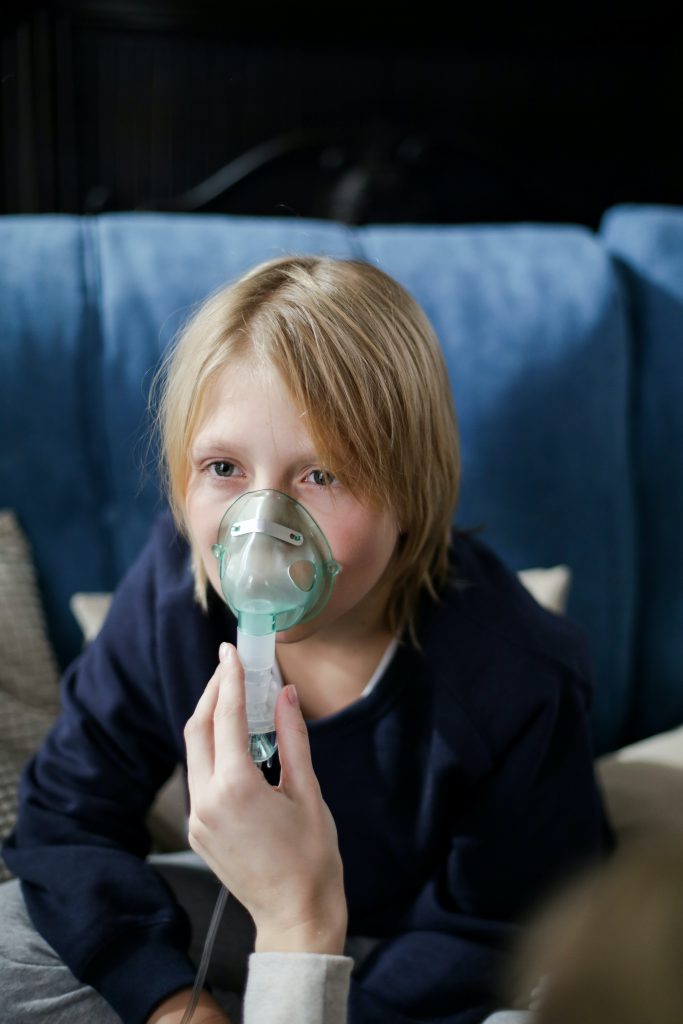
Increasingly, parents buy their own machines to vaporise solutions. They are called nebulisers. This is a personal choice and if used I find inhalation with saline in 0.9% and 3% most helpful to loosen secretions. This is similar to the saline nose drops but this time it is also delivered to the lungs. They act by drawing some fluid into the lungs and therefore loosen sticky secretions. You should be aware that they will not stop the cough but make it easier for your child to shift the secretions upwards and outwards.
In very small children you may have to introduce this very slowly and with great care as the vapour and the sound of the machine can easily upset your child. Always introduce this in play and you may have to use it initially in very short bursts only (a few seconds at a time). For many children it may work if you use it on yourself and pretend it is not for your child at all and they may only use it if they “insist”.
Inhaled corticosteroids [ICS]: This is usually used as preventer therapy when your child has childhood asthma or asthma and is often your brown, purple, orange, red or yellow inhaler. It is common practice by parents and even doctors to double the dose of ICS during an illness. We know from many studies that this is actually not that helpful. Also, just starting the ICS during a cold has not been shown to be as effective. However, I see many parents who believe it helps. What we do know is that increasing the ICS to 4 to 10 times the regular dose would help. We do recommend this at present for combination preparations such as Symbicort [Red] and it is called Maintenance and Reliever Therapy or short MART.
Salbutamol: If your child is wheezy you should use your reliever therapy (often your blue inhaler – can be red and white). A usual dose is 2 and 6 puffs of Salbutamol (blue inhaler) up to every 4 hours. This is taken with a spacer (valve holding device) and a mask (for most children under 3-4 years). Children over 3-4 years of age should use a spacer and a mouthpiece, if they have been shown how to use it. New evidence suggest a child should always use an inhaled corticosteroid [ICS] inhaler when Salbutamol is needed. The ICS can either be taken regularly in the morning and evening or in a combination inhaler together with a reliever.
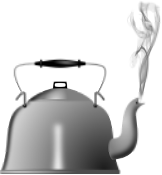
Here are extra words of caution:
Hot steam inhalation in small children has a real risk of severe burns. A steam shower may be safer.
Humidifiers can build up unhealthy residues and need regular and careful cleaning.
Do not use any ingredients if your child has developed an allergy to it.
I am sure there are many people with a lot of “in depth knowledge and experience” with TCMs for a common cold.
In 2012, China’s national essential drug list named 33 Chinese proprietary herbal medicines (CPHMs).
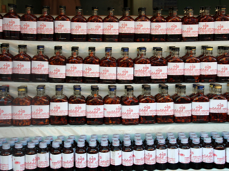
However, my personal experience with TCMs is very limited.
1A recent systematic review in 2015 looked at 6 large studies (5 from Mainland China and 1 from Hong Kong). The conclusion of the review was that TCMs are helpful improving the main symptoms, help reduce fever and shorten the illness. No serious side effects were noted.(1)
An earlier systematic literature search from 2014, done in collaboration of Beijing and Southampton Universities, looked at the effect of these 33 drugs and found little evidence of a true benefit.(2)
Both studies concluded that we need more research to evaluate the effects, potential benefits and harms further.
In my personal opinion, the greatest risk using these products is from a lack of regulation and lack of quality and safety standards. Medicinal products are often bought over the Internet. They may contain residuals from the production process or from packaging such as poisonous heavy metals. A further danger arises that they could be based on ingredients, which are obtained from illegally sourced compounds or endangered animals.
A careful assessment and competent medical expert advice is essential when using them. Based on my knowledge and experience I cannot advise further on the use of TCMs.
- Li G, Cai L, Jiang H, Dong S, Fan T, Liu W, et al. Compound Formulas of Traditional Chinese Medicine for the Common Cold: Systematic Review of Randomized, Placebo-controlled Trials. Altern Ther Health Med. 2015 Dec;21(6):48–57
- Chen W, Lewith G, Wang L, Ren J, Xiong W, Lu F, et al. Chinese Proprietary Herbal Medicine Listed in ‘China National Essential Drug List’ for Common Cold: A Systematic Literature Review. Gao C-Q, editor. PLoS ONE. 2014 Oct 20;9(10):e110560.
Again, there is lack of evidence and based on scientifically well conducted trials there is currently no evidence of a clear benefit.(1,2)
- Hawke K, van Driel ML, Buffington BJ, McGuire TM, King D. Homeopathic medicinal products for preventing and treating acute respiratory tract infections in children. Cochrane Database Syst Rev. 2018 09;9:CD005974.
- Lucas S, Leach M, Kumar S. Complementary and alternative medicine utilisation for the management of acute respiratory tract infection in children: A systematic review. Complement Ther Med. 2018 Apr;37:158–66
The short answer is as little as possible. In 2013 the estimated spending on supplements in the UK was £650m.
One exception is additional Vitamin D, as in our food does not contain large enough quantities and we require sunlight to convert it into the active form. The United Kingdom is too far North on our hemisphere to be exposed to long and strong enough sunlight throughout the whole of the year.

Still, the key is to invest in healthy food in the first place and start with your children right from the beginning. For example, as described earlier, unprocessed honey adds to the natural healing power of our own body. You may consider introducing this to your child’s diet as natural spread on a toast after the age of one year. A key is often to start a child on healthy food before you introduce unhealthy options as they are more likely to develop a likening from early on. You may use the honey as a sweetener in an unsweetened cereal instead of cereals with added sugar. There are many similar options. Many home-grown foods are rich in Vitamin C. The same applies to others food supplements such as calcium, iron and zinc.
You should also be aware that products are sold more expensively once they are labelled as “health products”. Do your own research and be critical in accepting so called ‘health benefits’ without your own careful assessment.
It is important to know that coughing is an effective way to clear our lungs and protect them from too many secretions and things, which should not be in the lungs in the first place. Children with a known muscle weakness often find it hard to cough and the secretions in the lungs tend to cause constant problems. In most cases, it is therefore good if your child has a strong and effective cough.
It is impossible to answer exactly how long the cough will last with your or any other child. What we know is that most coughs last between 1 and 3 weeks in small children following a respiratory tract infection. However, there are quite a number of children who seem to cough ‘forever’. In an Australian study doctors found that in 50% of the children the cough had stopped by 10 days, in 90% of all children the cough had finished by 25 days but 8% had a cough lasting longer than 28 days.(1)
My personal experience is that some of the children I see seem to cough for more than 5 weeks after one infection, but most children have had 2 or 3 infections in a 6-8 week period and never completely recovered in-between. These children are seen to get a little bit better for a few days and then the runny nose and the cough gets worse again and the whole process starts all over. It may help not to send these children back to nursery too soon but in a family with older siblings, repeated infections are impossible to avoid.
- Hay AD, Wilson A, Fahey T, Peters TJ. The duration of acute cough in pre-school children presenting to primary care: a prospective cohort study. Fam Pract. 2003 Dec;20(6):696–705.
Why should I…
…not give honey to a child under 1 year: It may cause botulism in infants under 1 year.
…be careful with steam inhalation? It may cause severe burns.
…not add Vitamin C to hot drinks? Heat destroys Vitamin C.
…not buy remedies from unknown sources? They may contain harmful or toxic substances.
Many young children suffer from frequent infections. This is one of the common concerns of parents in Clinics and the Emergency Department.
I added a “Frequently Asked Questions” section on this topic:
Recurrent Infections: May child is constantly ill – this cannot be normal!
This is difficult to write down or develop a ‘guide’ fit for all circumstances but there are some known emergencies you should know about.
I added a “Frequently Asked Questions” section on this topic:
This information is provided by Dr W Muller and will be regularly reviewed and updated.

